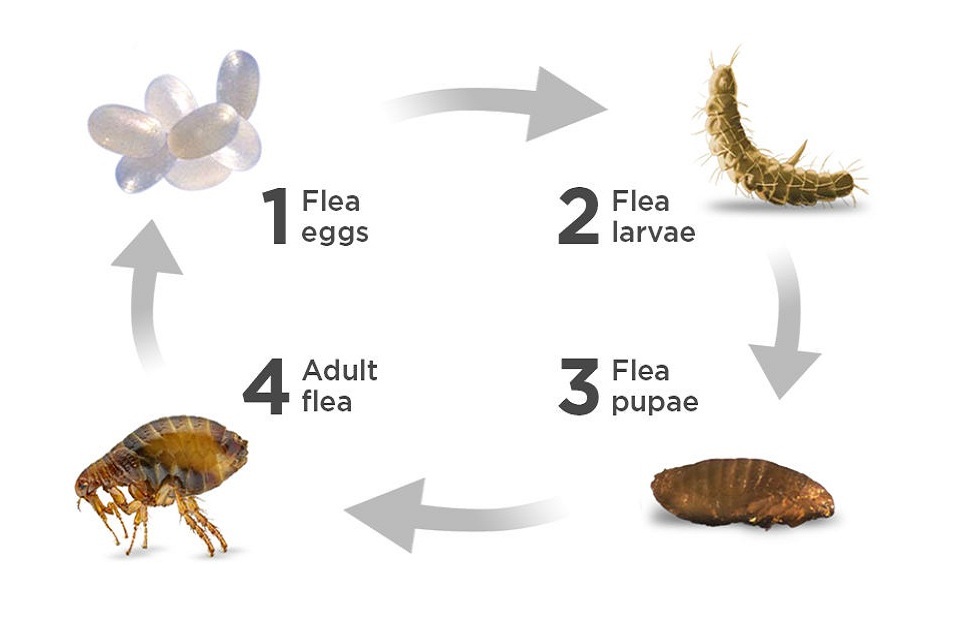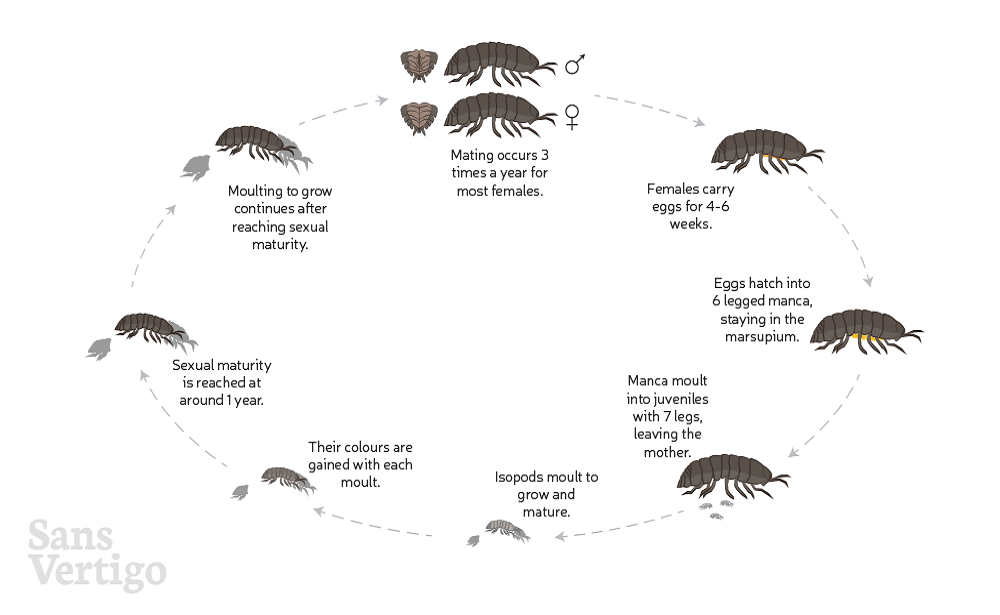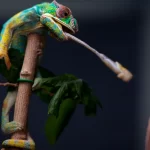The Life Cycle Of A Flea
When attempting to remove the existence of fleas, it is essential to be aware of and comprehend their life cycle. Whenever we think of fleas, we usually picture the adult flea. However, fleas may assume many different shapes when they are growing. Knowing the different phases of a flea’s life cycle can help us respond swiftly to an invasion.

Phases In The Life Cycle Of A Flea
A flea’s life cycle is divided into four phases. The whole life cycle will take a few weeks to several months, relying on the operating temperature and moisture conditions.
Stage 1: Flea eggs
After a mature female flea has located a host and consumed a blood feed, she may reproduce and deposit eggs. The eggs are little white things that are generally approximately 0.5mm in length, which is less than the surface area of a mote of dust!
Stage 2: flea larvae
When the heat and humidity conditions are favorable, the eggs develop, and the larvae appear.
Flea larvae are whitish, nearly transparent, and lack legs. They mature in just two weeks and are more prominent than flea ova, reaching a length of 5mm.
Stage 3: Flea pupae
Flea pupae are the cocoon phase of the flea cycle and account for 10% of the household flea number. This is the last step before being a mature flea, which might take many days or weeks.
Stage 4: Flea adults
Whenever a mature flea comes from its cocoon, it will look for hosts to live on within the next few hours. Female fleas can breed only after they’ve eaten, and they’ll start producing eggs after just a few days.
Conclusion
Fleas go through a total transformation. The flea’s life span, or stages, comprises the egg, larval, pupal, and maturity stages. The duration of the cycle varies from few weeks to many months and is primarily determined by climatic circumstances.

Emily’s passion for small critters knows no bounds. She’s your guide to the wonderful world of hamsters, guinea pigs, and all things pocket-sized.




